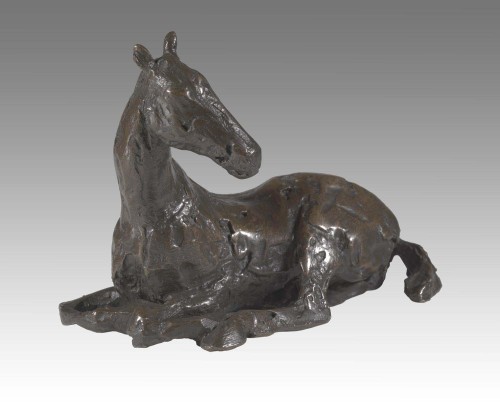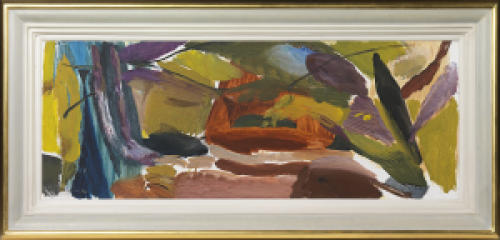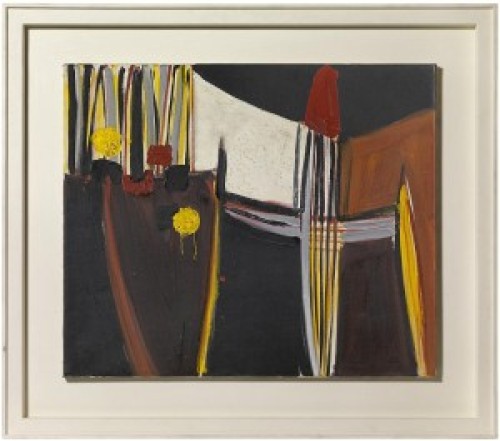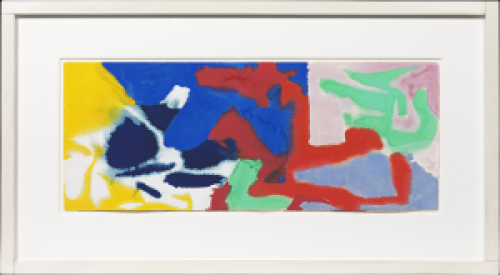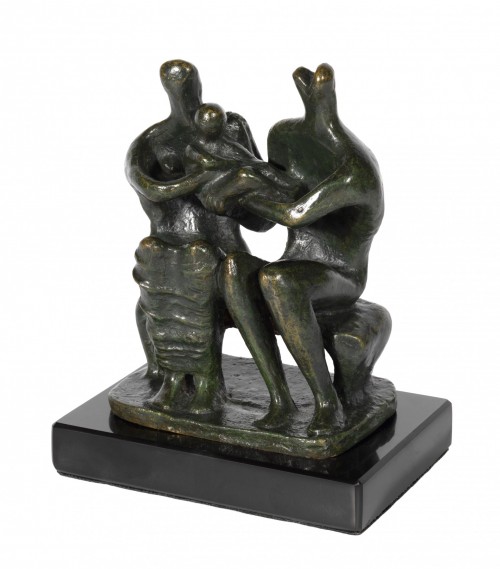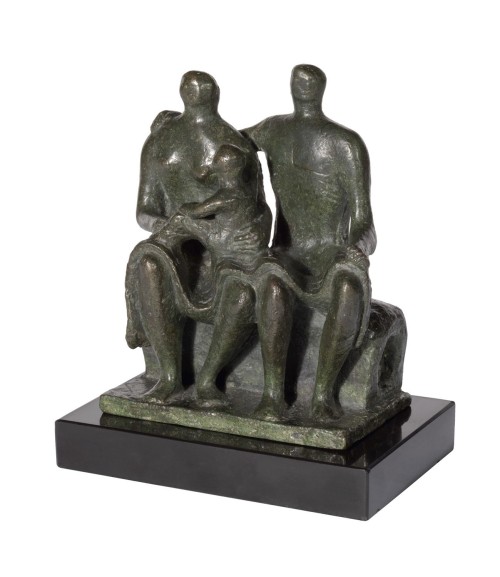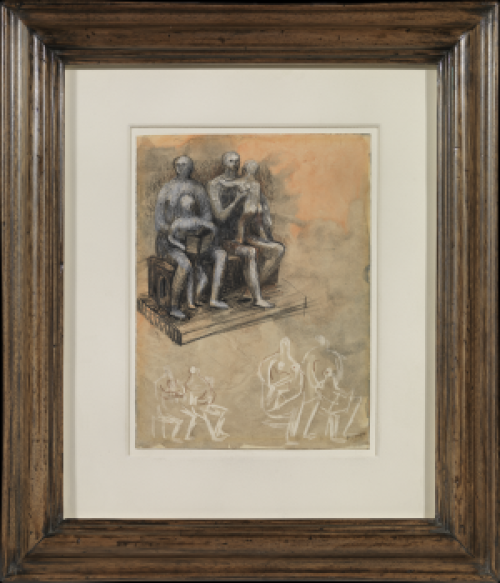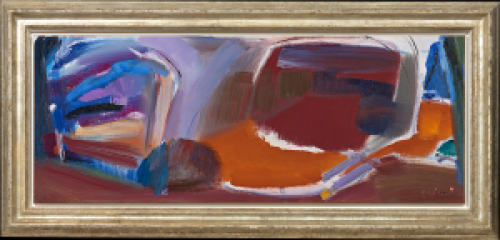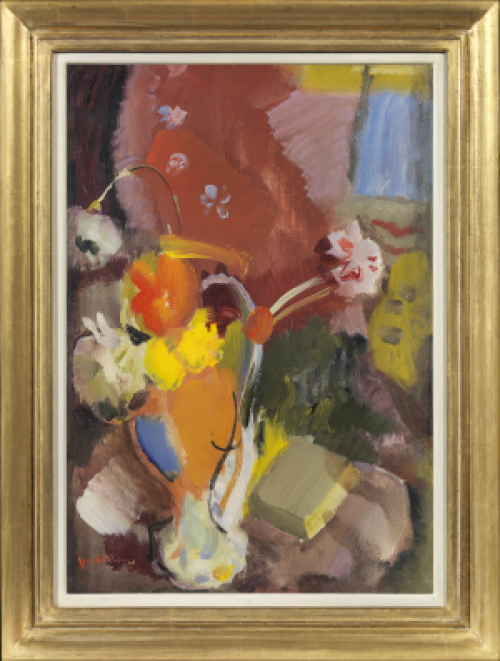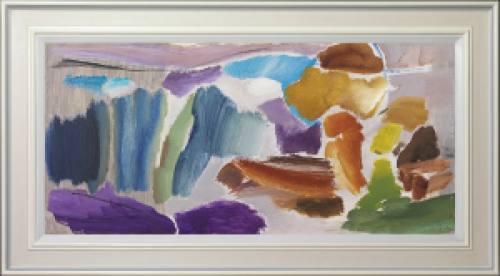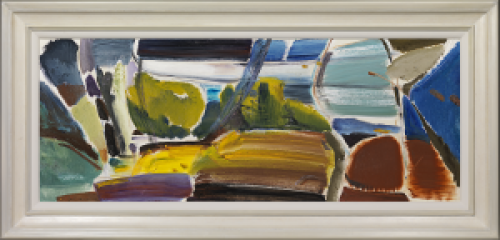DAME ELISABETH FRINK DBE RA
Thurlow, Suffolk 1930 - 1993 Woolland, Dorset
Ref: BR 32
Small sitting down horse
Signed, dated and numbered on the lower right side of the horse:
Frink 72 4/12
Bronze with dark brown patina: 4 ¾ x 6 ¼ x 3 ½ in /
12.1 x 15.9 x 8.9 cm
Conceived and cast in 1972 in a numbered edition of 12
FCR233
Provenance:
Private collection, Cornwall, acquired directly from the artist
Literature:
Jill Wilder (ed.), Elisabeth Frink Sculpture: Catalogue Raisonné, Harpvale, Salisbury 1984, no.206, p.181, another cast illus. p.180
Annette Ratuszniak (ed.), Elisabeth Frink Catalogue Raisonné of Sculpture 1947-93, Lund Humphries in association with the Frink Estate and Beaux Arts, London 2013, FCR 233, p.125 (another cast illus.)
In the 1970s and 1980s, Elisabeth Frink created a fantastic series of works including sketches, etchings, lithographs, grand statues and small-scale sculptures in bronze and gold, on the theme of horses at rest. Frink’s life-long fascination with horses was renewed by her move to the South of France, near the Camargue, from 1967-70, where she could observe the wild horses the region is famous for. Frink, an accomplished rider, also kept her own horse whose movements inspired this peaceful, yet powerful subject. In conversation with Dulan Barber the year after Small sitting down horse was created, Frink recounted: ‘I knew I was going to do a lying-down horse but what I’m doing as far as ideas or forms…It’s an emotional thing from seeing a horse lying down that started me off. I mean I have a horse and he does lie down. It’s just the shape that’s so fantastically sensual. They’re so vulnerable when they’re lying down. They take on another sort of mood.’[1] In the same interview, Frink confirmed, ‘I’ve been developing much more towards the sort of calmer, more powerful existence in forms. It’s a more contained power. More reserved shall we say. It’s something to do with texture as well. That has become smoother and more solid’ (ibid, p.86). Frink’s elegant and alluring Small sitting down horse, was conceived in 1972, the same year that the Morris Singer Foundry commissioned the comparable Rolling over horse in gold and Edwin Mullins published her monograph with Lund Humphries. Public commissions for Frink’s horse sculptures intensified during the decade, perhaps the most famous being Horse and rider, 1974, commissioned by Trafalgar House for Dover Street, London (now sited in New Bond Street).
Throughout her career Elisabeth Frink ‘searched for what it feels like to be, fully, both a human and an animal being, and asked herself repeatedly and unflinchingly about the true nature of life in the face of death.’[2] Frink’s affinity with nature as a subject and passion for horses in particular stemmed from a rural childhood during which she learnt to ride from a young age and continued into her later years. She rode every other day in the fields around her Dorset home, Woolland,
experiencing the physicality of horses immersed in the English countryside. For Frink, horses represented ‘a multiplicity of meanings – masculine and feminine sexuality, wildness, unusual sensitivity and freedom from mental and physical constraint’.[3] The artist’s biographer, Stephen Gardiner, suggests the sight of Verrocchio’s equestrian statue of Colleoni and the Roman horses of St Mark’s on a post-war trip to Italy, set Frink on her chosen path.[4] While for Edward Lucie-Smith, the semi-wild horses of the Camargue, ‘whose resemblance to those in the cave paintings at Lascaux has often been remarked, made an indelible imprint on her imagination.’[5]
Frink developed her own personal style of bronze patination over a number of years and created her large body of work without the aid of assistants: ‘This enabled me to have the last word, which was very important to me’.[6] Frink would use a skeletal framework of chicken wire and metal rods as a base over which she would model with plaster of Paris, liquid or soaked strips of cloth, bulked with card or small pieces of wood. The mass would then be chiselled and shaped quickly after drying before the plaster set; a direct and tactile method in harmony with her intuitive development of ideas. When the plaster was finished, the sculpture would be cast in bronze ‘at the same time preserving the surface details and texture made by hand and or tool’.[7] Small sitting down horse is part of a series of horse sculptures that showed Frink celebrating the animals she loved, revealing ‘the spirit of the horses rather than the beasts themselves’.
Dame Elizabeth Frink, Horse Rolling Over, c.1986
Plaster and steel: 24 x 49.2 x 25.5 cm
Tate
[1] ‘Elisabeth Frink: A Conversation with Dulan Barber’, The Transatlantic Review, no.46/4, summer 1973, p.87.
[2] Annette Ratuszniak (ed.), Elisabeth Frink Catalogue Raisonné of Sculpture 1947–93, Lund Humphries, Farnham 2013, p.9.
[3] Sarah Kent (ed.), Elisabeth Frink Sculpture Catalogue Raisonné, Harpvale Limited, Salisbury 1984, p.67.
[4] Stephen Gardiner, Frink: The Official Biography of Elizabeth Frink, Harper Collins, London 1998, p.20.
[5] Edward Lucie-Smith, Elizabeth Frink Sculpture Since 1984 and Drawings, Art Books International, London 1994, p.40.
[6] The artist cited in Kenneth Clark, Sculpture in the Open Air, exh. cat., Holland Park, London City Council, 1954.
[7] Sarah Kent (ed.), Elisabeth Frink Sculpture Catalogue Raisonné, Harpvale Limited, Salisbury 1984, p.53.

